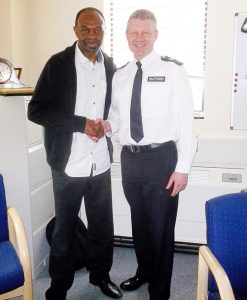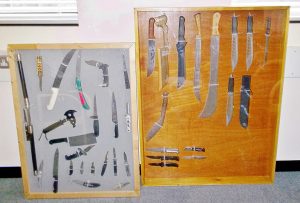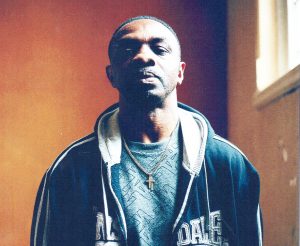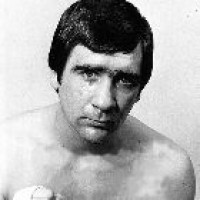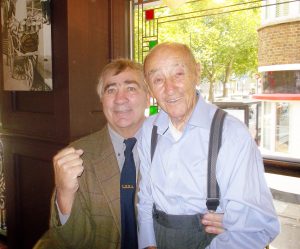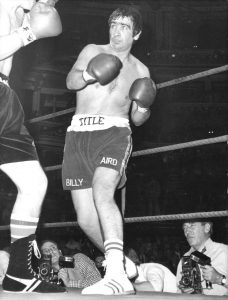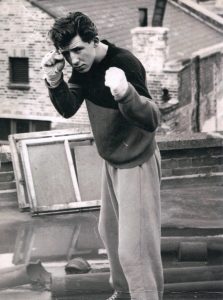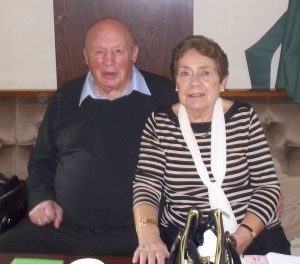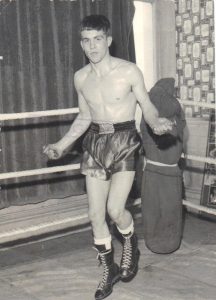
STAN KENNEDY (Light-welterweight contender who boxed out of Dagenham in the sixties)

Light-welterweight who boxed out of Dagenham in the sixties.
If there was ever a boxer as bashful about his ring achievements as Stan Kennedy, he would indeed be a hard man to find. On a personal level, Stan is such an affable man with a quietly confident demeanour and a ready smile. So, once we had the voice-recorder going and we embarked upon this interview, his candid viewpoint of his own shortcomings as a fighter took me by surprise – a classic example of just how complicated boxers can be.
“I was born in Olney in Buckinghamshire on 18th April 1942. They say I boxed out of Dagenham because my family were evacuated out to Olney during the war. Then, once I was born, we all came home again to Dagenham. So I was born in the middle of the war. I was one of eight children and, like it was for a lot of people back then, they were very hard times, but there was a lot of love in our family. My eldest brother was boxing, and so was my next brother up, so then I went along with them and that’s how it all started.”
“I boxed for Ilford Boxing Club, which doesn’t exist anymore. I suppose I must have had 50 amateur fights. But, to be honest, I was the most under-confident boy who ever boxed. Because I came from such a poor background, I never had nothing. When I used to get to the shows, I always felt a bit inferior because all the other kids had flash shorts, but anyway, I got over that. As an amateur, I never boxed as a senior. I boxed as a schoolboy. I reached the semi-finals of the Schoolboys of Great Britain, and I got beat down in Bristol. I joined the Army Cadets when I was 14 and I got to the Army Cadets Championship final, and I got to the London Junior ABA finals, and I got beat by Johnny Mantle.”
Stan turned professional at the age of 19. “I was Terry Lawless’ first fighter. Funnily enough, I was speaking to his wife, Sylvie, two or three weeks ago. I still keep in touch with her regularly. Terry used to train me at the Duke of Fife in Katherine Road, East Ham, and I was lucky because I was the only fighter he had, so he really looked after me. To me, Terry Lawless was a brilliant man. The gym itself was really busy. It was run by a fella named Bert Spriggs. Terry Spinks used to train there, and Billy Walker, the heavyweight, he used to train there. I got quite friendly with Billy. He was a nice fella, a very quiet man in the gym, and I remember he was a bouncer down the Ilford Palais at the time.”
“There was an awful lot of boxing going on in the East End in those days, and the local paper was called the Stratford Express. The boxing reporter was a bloke named Norman Giller, and he used to write about us all in the paper, so a lot of the fighters that came out of East London used to buy it. All of a sudden, they put a photo of me in the paper, saying “This boy has just been signed up by Terry Lawless.” So, after that, every time I won, the other boxers used to read about it. After I had 12 fights, and I only lost two, the Stratford Express was reporting on how well I was doing, and then certain fighters, some of whom beat me as amateurs, they came to Terry Lawless, and it all sort of snowballed from there. I mean, anybody can get a manager’s licence, but it’s getting the first fighter to go with you.”
“As I say, I was always the under-confident fighter. I got knocked down so many times. I remember, one time, I was boxing at Shoreditch Town Hall. I must have had about seven or eight fights by then. My missus, Diane, was in the third row from the ringside and, unbeknown to me, there was a bit of a scuffle. Anyway, I fought this fella and I beat him. I went and got a shower, come out to pick my missus up, and she wasn’t where she was supposed to be. I said ‘Has anyone seen my wife?’, and they said “Yeah, they sent her over to the back.’ So I went over to find her, and her face was like thunder. I said ‘What’s the matter?’ The thing was you used to have betting round the ringside in the old days, and my wife said ‘The two fellas in front of me, when you come in, one asked about the odds, and the other one said you only go down to push the betting price up, and that you’re a slippery bastard.’ So my missus got the hump with it and had a go at these two blokes. They called security, and they carted her to the back of the hall. It was funny really. But, I mean, whenever I went down, it was never planned. I just used to walk into punches. I never got knocked out. I got stopped, but I was never knocked out, touch wood!”
“For me, one of the best things about being a boxer was having my hand lifted at the end of the fight. Also, I think boxing gave me a little bit of prestige, if you know what I mean. You got some respect. It made me feel, not important, but a bit special. I boxed a geezer named Ray Thompson. We both came from Dagenham, but he was a seasoned pro and he was a big hero of mine. Although he was one of those boys getting beat, he fought the best. When he was fit, he was a very, very good fighter. He fought good class fighters. When I boxed him, they called it the featherweight championship of Dagenham. Anyway, he had me down twice the first round, once the second round, and I came back and I got the decision. I don’t think I won it, but they held my hand up, so I must have done something right.”
Stan retired from the ring at the age of 24, and he was on a winning streak when he decided to hang up his gloves. “To be honest with you, I couldn’t believe my luck how my record had gone. I was quite pleased with it and I didn’t want to spoil it, so I decided to retire. I loved the fight game, but I never believed I was that good. But, when I think back, I got to the Schoolboys semi-finals of Great Britain. As a pro, I used to get knocked down a lot, but somehow, I kept getting back up and I kept winning. I only lost four out of 23, so I didn’t do too bad really.”
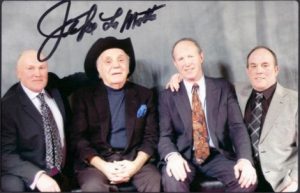
Stan Kennedy (right) with his pals and fellow ex-boxers, Brian Hudson and Georgie Day, with the late, great Jake LaMotta.
